Immersive Van Gogh, a showcase highlighting post-impressionist genius Vincent van Gogh’s greatest works, opened on March 18 and brought to San Franciscans a new way of connecting and interacting with the work of the famous painter. The exhibit, located at SVN West, just off Market Street, enchants the viewer, who becomes a part of the show, engaging with the art in a new way never before experienced.
Immersive Van Gogh plays on a loop that lasts about 35 minutes, but can be started at any point and rewatched as many times as desired. The exhibit is projected against all four walls of the enormous venue as well as on the floor, creating a 360 degree view of some of van Gogh’s most beautiful masterpieces as well as some of his lesser known paintings. The show is indoors but with plenty of space to social distance. Masks are mandatory and each attendee’s temperature is checked upon arrival.
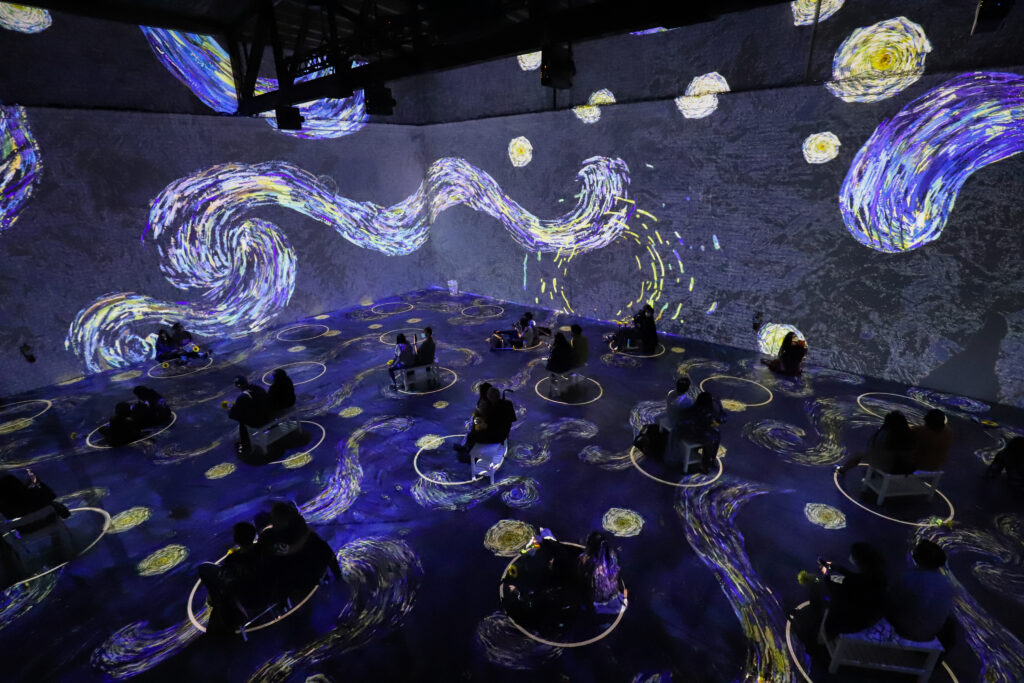
The exhibit was created as experiential art to celebrate van Gogh’s art in a new way — it seeks to acknowledge the emotional pain the famous artist endured and that drove his work. For half an hour, viewers get a window inside of his mind.
SVN West, formerly known as the Fillmore West, at 10 South Van Ness Avenue, was an intentional choice for the exhibit’s location. The Fillmore West exemplified creative music throughout the 1960s, hosting some of the most innovative and famous bands of the era.
The van Gogh show is absolutely captivating. The viewer becomes truly immersed in van Gogh’s troubled life, experiencing his thoughts and views from the center of his mind.
The opening is a tense combination of projections and music — the buzz of insects increases and images of the artist’s self portrait, in which he holds four lit candles, flash quickly across the walls. The same self-portrait appears throughout the show, lighting up the exhibition space until one by one the candles have burned out and the large room fades to black.
Between the image’s first appearance and the moment the last candle burns out, a lot happens. The show feels almost choreographed, like a graceful dance following van Gogh’s stream of consciousness. The initial darkness is quickly overcome by striking yellow sunflowers from van Gogh’s series of paintings, “Sunflowers.” Morphing between the brightest yellows and the darkest blues, the experience for the viewer is dreamlike as it explores the artist’s tragic and self-destructive life from the inside.
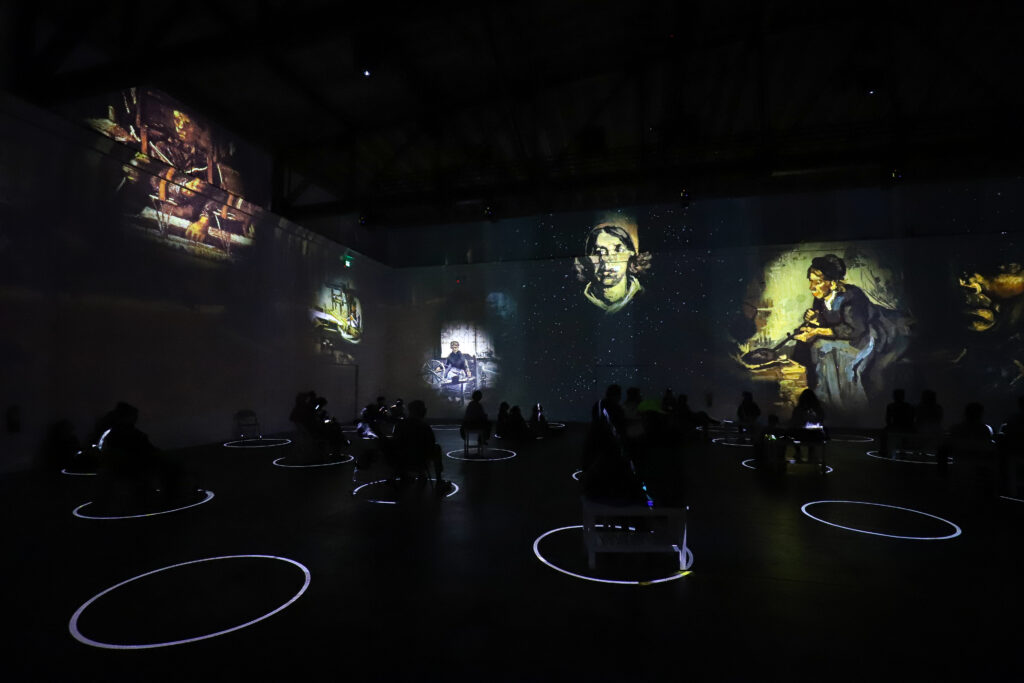
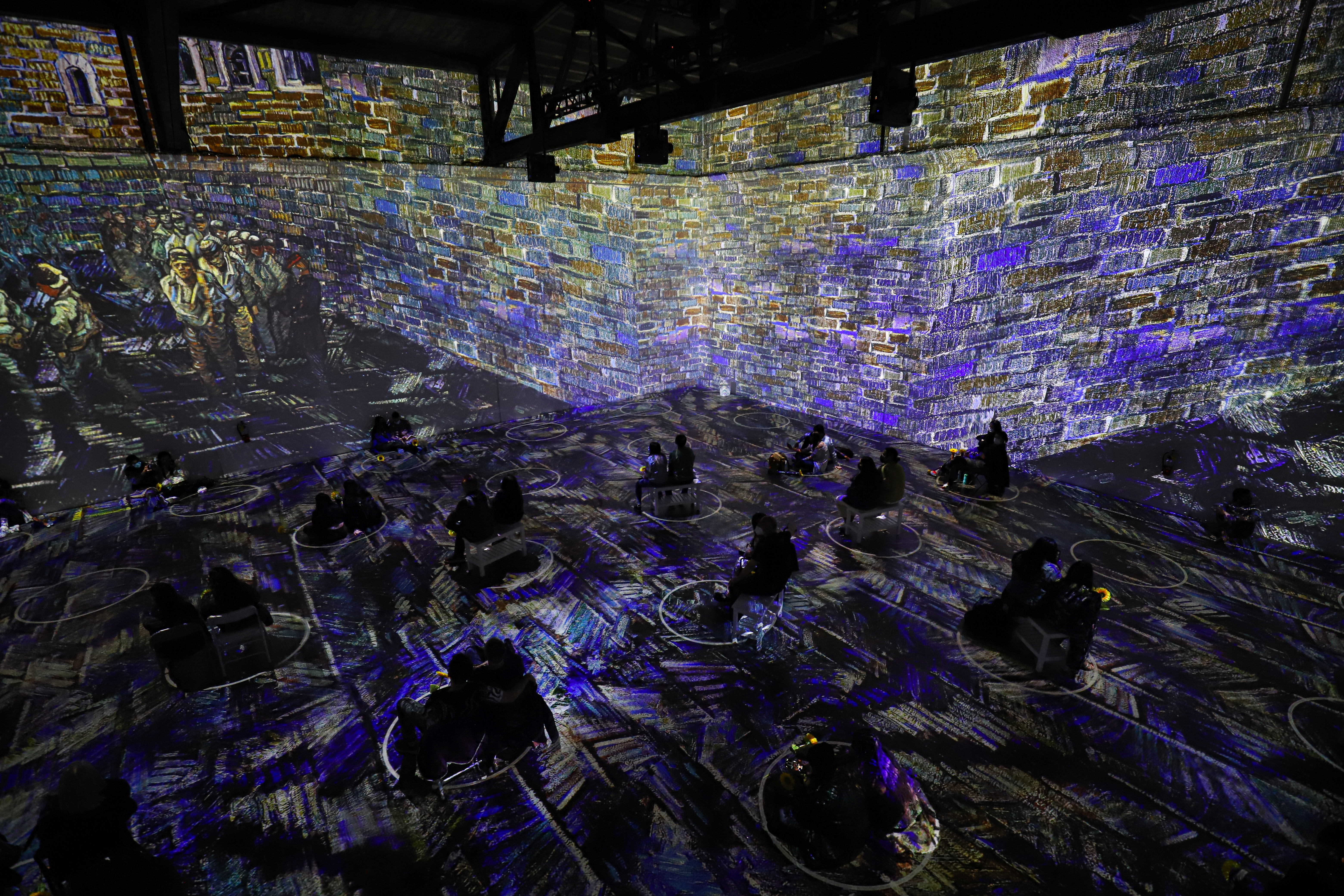
The show was conceived by Massimiliano Siccardi, the co-creator of a similar exhibit in Paris, “Atelier des Lumières” (showcased in the Netflix show, Emily in Paris). However, Siccardi stated that he created this new exhibit with darker and deeper emotion than he had the one in Paris. The accompanying soundtrack was composed by Luca Longobardi.
After each dazzling painting is projected, the theater dims. At one point, all that’s visible in the darkness is a dish of potatoes, emitting thick, bright steam like high beams reflecting on fog. As the smoke rises, the rest of van Gogh’s first masterpiece, “The Potato Eaters,” is illuminated.
The sun rises and sets over the audience as they watch the paintings in front of them distort and twist into new ones. Van Gogh’s artwork is blown up to a massive scale of 300,000 cubic feet, according to the exhibit’s website. Every brushstroke is highlighted.
Historians speculate that van Gogh may have been treated with digitalis. (Although his exact diagnosis is unknown, it was likely he suffered from epilepsy, bipolar disorder, and manic depression, according to the Van Gogh Gallery.) Digitalis can cause xanthopsia, or “yellow vision.” This may have been why the artist’s palette shifted towards yellows in the last years of his life. Xanthopsia can be experienced by everyone watching the projections as delicate yellow starlike circles rise from the floor.
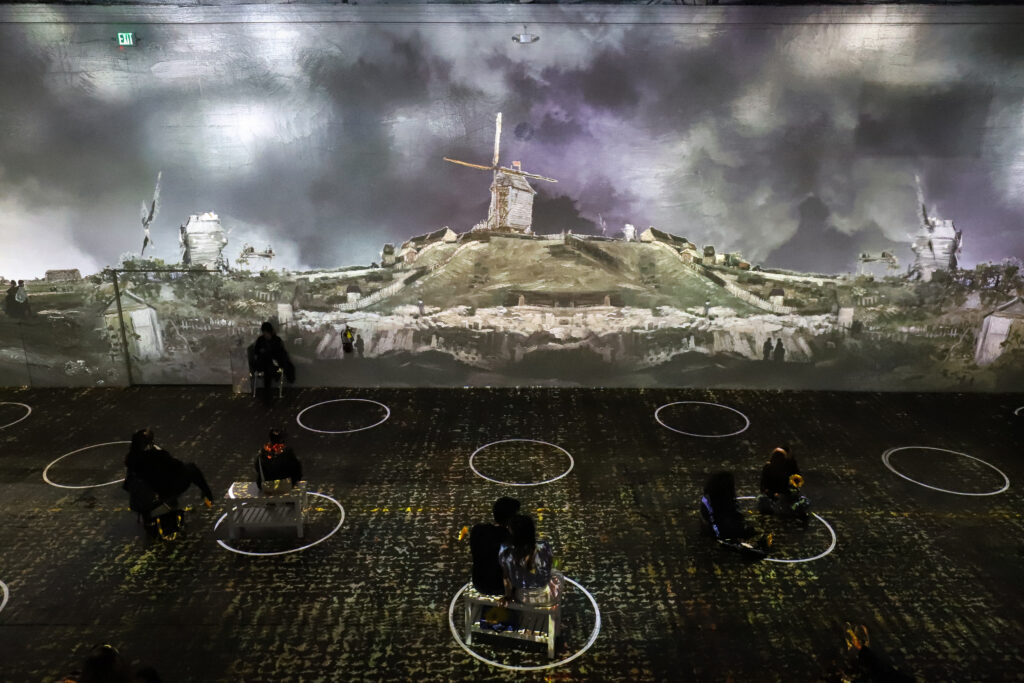
The experience in the exhibit feels very much like stargazing — viewers can sit, stand or lie down and watch the sky around them change and morph. The audience also becomes a part of the exhibit. White circles are projected all over the ground for the viewers to occupy. Not only does this aspect of the exhibit help maintain COVID safety regulations, but it also turns the exhibit into an interactive experience where viewers can move and watch from a new perspective.
Much of the sequence has the feeling of an unreliable or distant memory. A painting’s landscape is replaced by something new, alternating with the changing sky. Being in the show feels like piecing together images from the past.
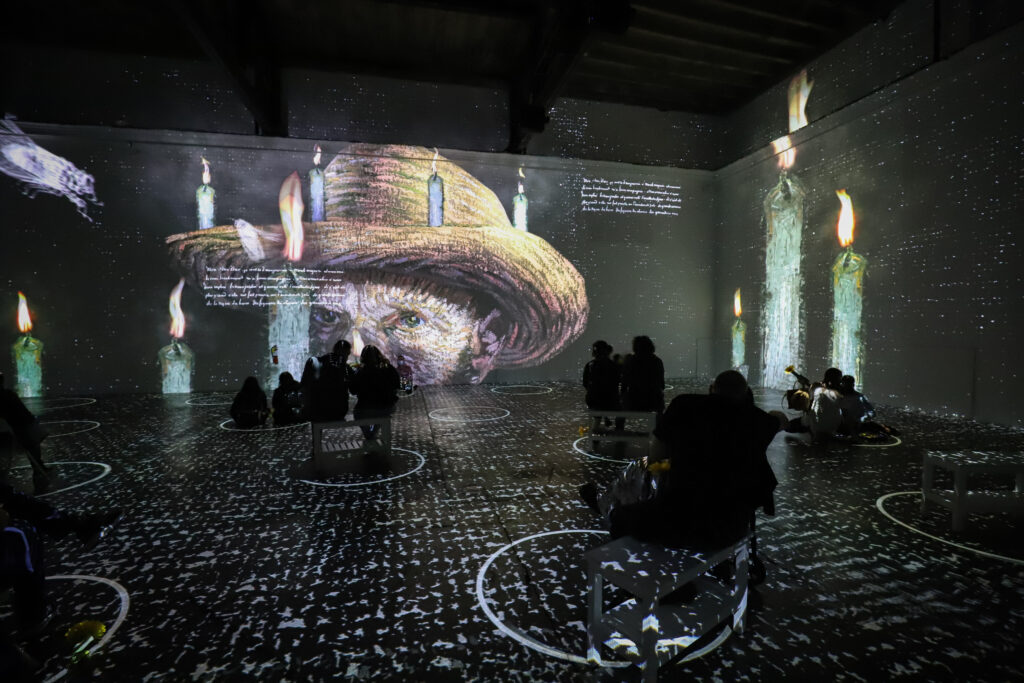
Photo by Gabe Castro-Root
The exhibit expands the impact of van Gogh’s art beyond what he was ever able to accomplish in his lifetime. Van Gogh’s beautiful technique includes his ability to emote movement into still paintings, and Siccardi uses this technique to bring his artwork to life. At one point, trees grow and gently sway in the wind like a scene halfway between reality and a hallucination. The experience is surreal.
No van Gogh exhibit would be complete without his famous “Starry Night.” The original painting was created during the artist’s stay at the asylum of Saint-Paul-de-Mausole. However, no scenery near the asylum matches that of the painting, indicating that the scene was constructed entirely from van Gogh’s mind. Viewers get to watch piece by piece from the perspective of van Gogh as yellow paint stretches and twists to form the bright stars of the iconic painting.

Photo by Gabe Castro-Root
At the end of the showcase, audience members can exit the large room and enter the gift shop or the cafe. Although the cafe hasn’t been opened yet, the menu is listed on the website and seems to be inspired by van Gogh’s artwork — including mesmerizing eclairs decorated as his masterpieces. The gift shop offers reflections of the amazing show it markets, keepsakes ranging from postcards to clothing to puzzles.
Tickets for Immersive Van Gogh run between $25 (for children under 16) and $100 (for VIP access), and are being sold for dates through September 6. There are many different options for tickets, including FLEX tickets that allow you to attend during an extended window of time, as well as basic, premium, and VIP tickets; each includes its own perks.
Tickets are more expensive than that of a traditional museum’s, which unfortunately makes the exhibit off limits for some. But if you can splurge, the experience is worth it. The exhibit is beautiful, and offers much to discover in this reimagined look at van Gogh’s work.







